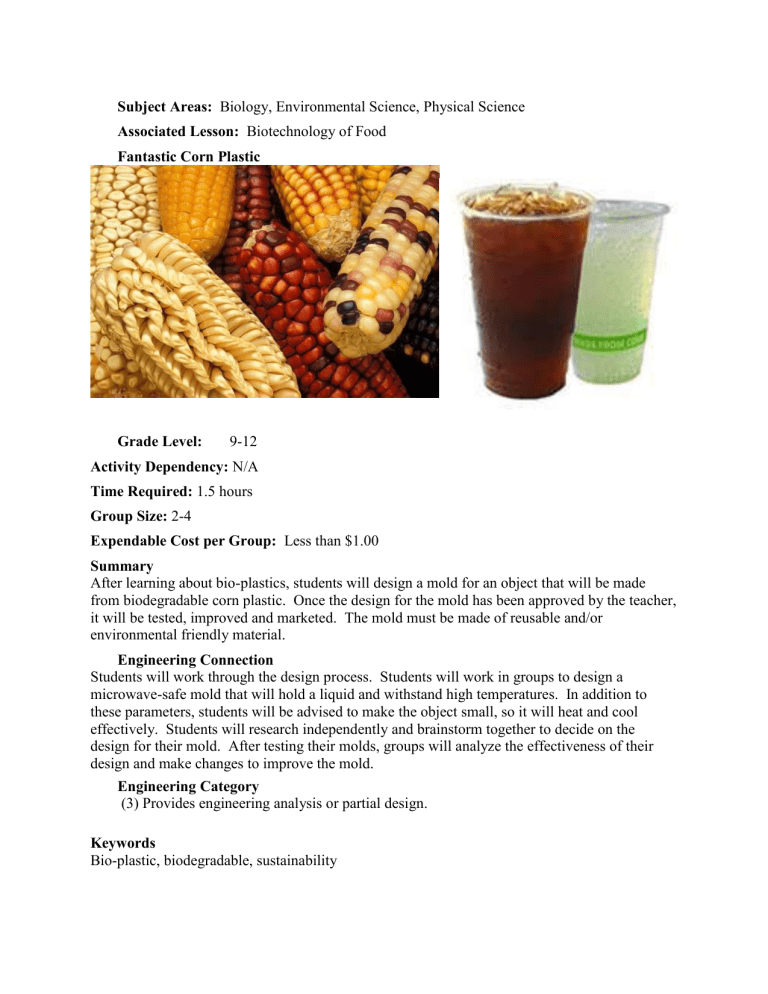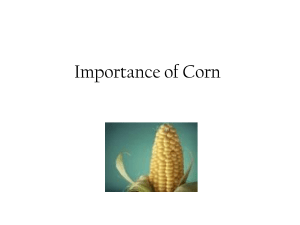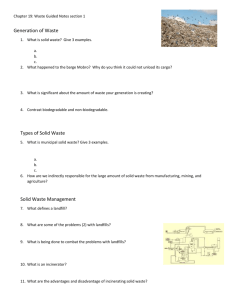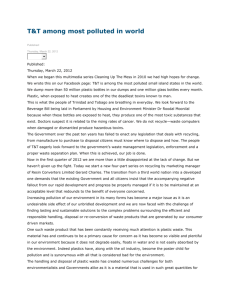Fantastic Corn Plastic

Subject Areas: Biology, Environmental Science, Physical Science
Associated Lesson: Biotechnology of Food
Fantastic Corn Plastic
Grade Level: 9-12
Activity Dependency: N/A
Time Required: 1.5 hours
Group Size: 2-4
Expendable Cost per Group: Less than $1.00
Summary
After learning about bio-plastics, students will design a mold for an object that will be made from biodegradable corn plastic. Once the design for the mold has been approved by the teacher, it will be tested, improved and marketed. The mold must be made of reusable and/or environmental friendly material.
Engineering Connection
Students will work through the design process. Students will work in groups to design a microwave-safe mold that will hold a liquid and withstand high temperatures. In addition to these parameters, students will be advised to make the object small, so it will heat and cool effectively. Students will research independently and brainstorm together to decide on the design for their mold. After testing their molds, groups will analyze the effectiveness of their design and make changes to improve the mold.
Engineering Category
(3) Provides engineering analysis or partial design.
Keywords
Bio-plastic, biodegradable, sustainability
Educational Standards
Alabama Course of Study for Science Objectives a.
Biology (1) b.
Environmental Science (2,3,9) c.
Physical Science (12)
Alabama High School Graduation Exam Objectives (1)
Pre-Requisite Knowledge
Prior to performing this activity, students must have basic measurement skills including the use of a top-loading balance.
Learning Objectives
After this lesson, students should be able to:
Define the terms bio-plastic and biodegradable.
Select appropriate laboratory glassware and balances to conduct an experiment.
Describe the environmental hazards associated with the use of fossil fuels.
Identifying ways to manage waste, including recycling and reusing.
Materials
Cornstarch
Water
Corn Oil
Food coloring (optional)
Stir rods
Hot mitts or pot holders
Beaker
Graduated cylinder
Pipettes
Weigh boat
Balance
Microwave
Various materials/objects for making molds
Introduction / Motivation http://dsc.discovery.com/videos/how-stuff-works-corn-plastic.html
Plastics Timeline
Vocabulary / Definitions
Word Definition
Biodegradable Capable of decaying through the action of living organisms
Bio-plastic Plastics derived from renewable biomass sources.
Procedure
The following scenario should be read to/by the students:
The Fantastic Corn Plastic manufacturing company has chosen your team to create a sample item that will be sent to companies around the country to get the word out about corn plastic.
Your team must decide what small plastic item you will design and get approval from the CEO of the company (your teacher). Then you will design a mold for your plastic product made entirely of microwaveable, environmentally-friendly products (either biodegradable or reusable).
You will use the recipe below to make your corn plastic and pour it into your mold. After it has been heated and allowed to cool, your products will be judged by a panel of experts. One product will be chosen as the new sample item for the company.
1.
Decide what small plastic item your team will create.
2.
Name your product.
3.
Determine the properties your plastic will need (strength, flexibility, heat resistance, etc.)
4.
Design a mold for your plastic. Keep the mold as environmentally-friendly as possible
(either biodegradable or reusable) and microwavable.
5.
Use the balance to measure 10 g of cornstarch.
6.
Use the graduated cylinder to measure 10 ml of water.
7.
Use the pipette to add two drops of corn oil.
8.
Mix the ingredients for the corn plastic. Stir the mixture immediately before pouring it into the mold.
9.
Pour the mixture into your mold and microwave for 20 seconds. Continue to microwave in 20 second increments until the plastic is solid. Be very careful removing your mold from the microwave.
10.
Allow plastic to cool completely before removing it from the mold. (Overnight if possible)
Corn Plastic Recipe:
10 g cornstarch
2 drops corn oil
10 ml water
Food coloring if desired
Background
As much as 60% of the materials sent to landfills are plastic. Since petroleum-based plastics are not biodegradable, they will be in the landfills indefinitely. In an effort to reduce plastics in landfills as well as the use of petroleum, bio-plastics are being produced. Polylactic Acid (PLA) is a corn-based bio-plastic. PLA can be used to replace PET (polyethylene terephthalate) for many uses.
Pros:
Manufactured from corn starch, a renewable resource.
Biodegradable: breaks down into mostly carbon dioxide and water.
Compostable, once composted it is indistinguishable from the other compost.
Does not emit toxic fumes if incinerated.
Does not leech chemicals into food or soil.
Freezer safe.
Can handle hot items up to 120F (200F for utensils).
Looks, feels, handles just like plastic.
Is inexpensive.
Cons:
Is not recyclable, must be kept separate from plastic.
Few commercial composting facilities (113 in U.S.), only 1/4 of which accept residential materials.
Commercial Composters use Microbes to break down organic material. Large amounts of
PLA in a composter would cause problems because it breaks down into lactic acid which is wetter and more acidic. They can break this down but it requires more oxygen for the microbes to consume. Commercial Facilities would have trouble providing enough
oxygen for large amounts of PLA to breakdown. Anaerobic digesters would not have the same problem.
It is estimated that in a landfill PLA will take anywhere from 100 to a 1000 years to biodegrade.
Typically made from genetically modified corn and usually not organic.
Diverting corn away from the world’s food supply.
Attachments
Plastics Timeline
Safety Issues
Check all glassware for cracks before using.
Hot mitts should be worn when removing hot plastic from microwave.
Troubleshooting Tips
Students should clean all glassware and their areas.
It is helpful to stir while adding the cornstarch to the water. Students should continue stirring to avoid clumping.
Investigating Questions: N/A
Assessment
Pre-Activity Assessment
Written plan for the design for the mold.
Embedded Assessment
Usual lab performance assessment used by teacher.
Post-Activity Assessment
Written plan for the re-design of the mold.
Activity Extensions
Marketing the plastic product.
Altering the Corn Plastic recipe to attain desired properties.
Activity Scaling/Differentiation: N/A
Additional Multimedia Support: N/A
References
Dictionary.com. Lexico Publishing Group, LLC. Accessed August 22, 2009. (Source of some vocabulary definitions, with some adaptation) http://www.dictionary.com
Corn in the Classroom, Kentucky Corn Growers Association http://www.kycorn.org
.






